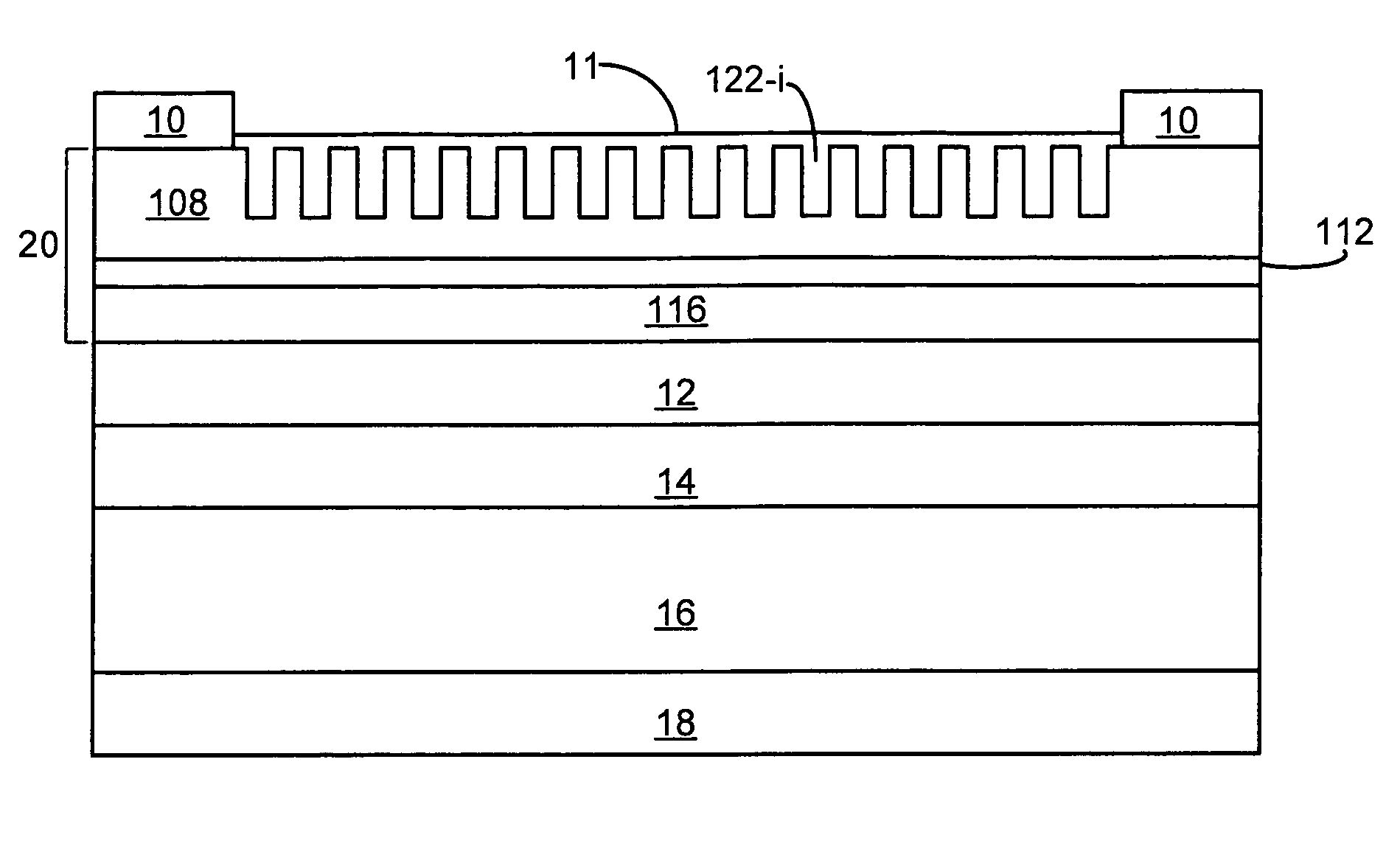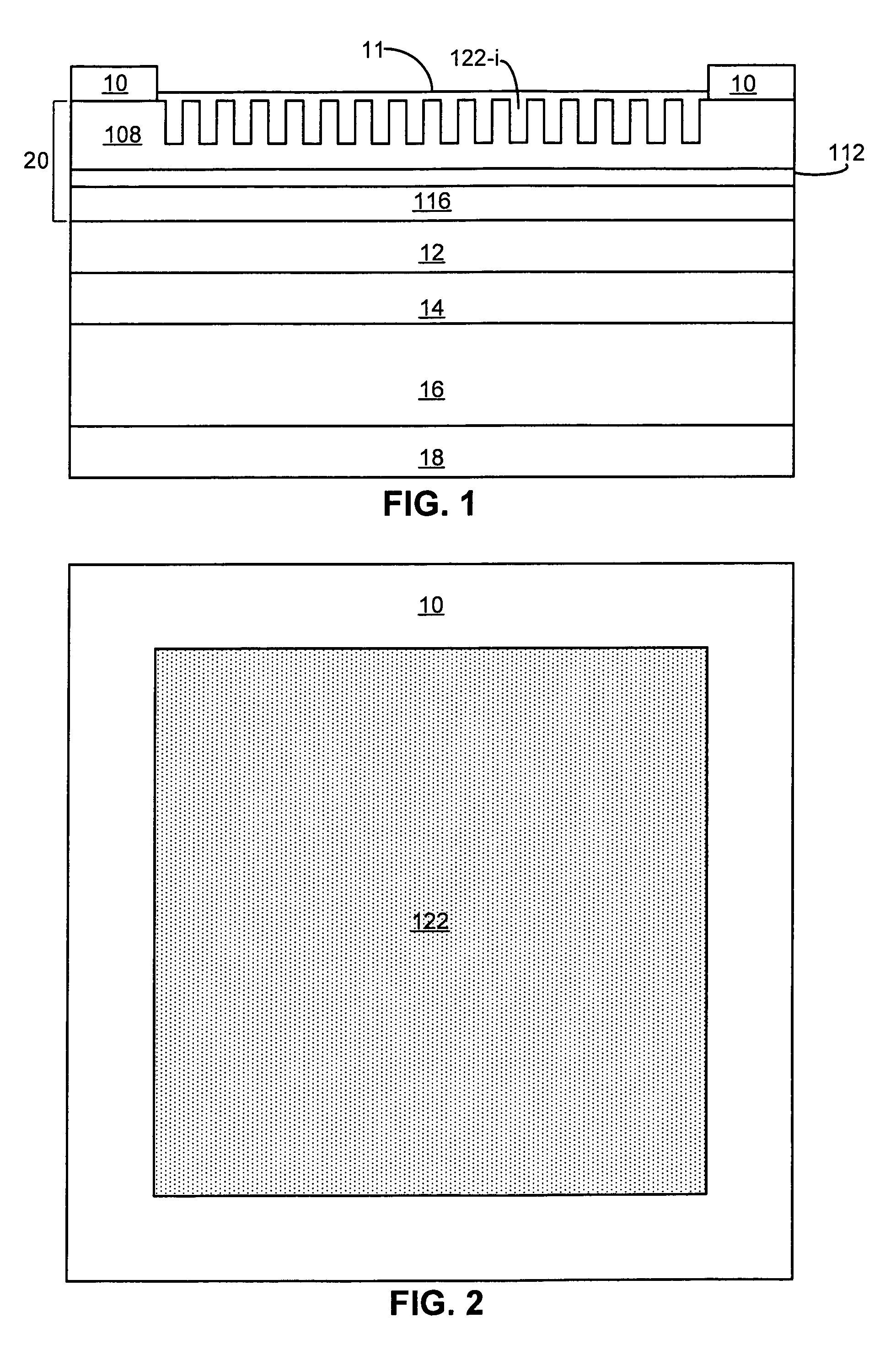Photonic crystal light emitting device with multiple lattices
a light-emitting device and crystal-type technology, applied in the direction of instruments, optical elements, optics, etc., can solve the problems of poor extraction efficiency, less than 30%, and limited extraction efficiency
- Summary
- Abstract
- Description
- Claims
- Application Information
AI Technical Summary
Benefits of technology
Problems solved by technology
Method used
Image
Examples
first embodiment
[0028]In accordance with embodiments of the invention, a photonic crystal device includes multiple lattice types. In the device, the multiple lattice types are formed on different regions of the device. At least one photonic crystal structure, referred to herein as the “enhancer photonic crystal,” is designed to optimize total radiative power (radiative efficiency), and at least one photonic crystal structure, referred to herein as the “extractor photonic crystal,” is designed to optimize light extraction (extraction efficiency).
[0029]FIGS. 5 and 6 illustrate plan views of portions of devices including enhancer and extractor photonic crystals according to embodiments of the invention. In both devices, extractor photonic crystal regions 52 surround enhancer photonic crystal regions 50. A metal web 54 interposes the extractor and enhancer regions to provide current to the enhancer regions 50.
[0030]FIGS. 7 and 8 illustrate two possible cross sectional views along axis 60 of either of t...
second embodiment
[0048]In the invention, multiple lattice types are included in the same region of the device in a quasi-crystal. FIGS. 16 and 17 illustrate two examples of an arrangement of holes that form a quasi-crystal. As illustrated in FIGS. 16 and 17, a quasi-crystal is a pattern of holes located on the vertices of a repeating pattern of squares 31 and triangles 32. Such a repeating pattern is often referred to as an Archimedean lattice or a penrose tile. The lattice constant a of a quasi-crystal is the length of a side of a triangle or square in the repeating pattern. The lattice constant a and other parameters of the quasi-crystal photonic crystal, such as hole depth and diameter, may have the same ranges as described above in reference to other photonic crystal lattices. A device may incorporate a quasi-crystal as the only photonic crystal in the device, or a quasi-crystal lattice may be used as an enhancer, extractor, or reflector region as described above.
PUM
 Login to View More
Login to View More Abstract
Description
Claims
Application Information
 Login to View More
Login to View More - R&D
- Intellectual Property
- Life Sciences
- Materials
- Tech Scout
- Unparalleled Data Quality
- Higher Quality Content
- 60% Fewer Hallucinations
Browse by: Latest US Patents, China's latest patents, Technical Efficacy Thesaurus, Application Domain, Technology Topic, Popular Technical Reports.
© 2025 PatSnap. All rights reserved.Legal|Privacy policy|Modern Slavery Act Transparency Statement|Sitemap|About US| Contact US: help@patsnap.com



